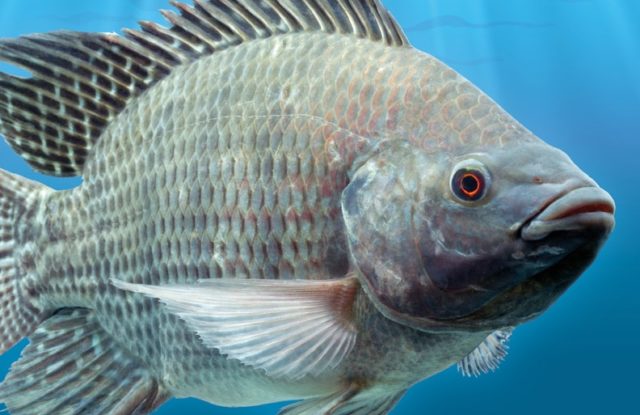
Tilapia is a species of freshwater fish that is widely consumed and farmed globally. The popularity of tilapia is due to its delicious taste, affordability, and sustainability. In this article, we dive into the world of tilapia and uncover the most interesting facts about this amazing fish.
Tilapia is a type of freshwater fish that is native to Africa. It is a member of the cichlid family and is known for its mild, white flesh. Tilapia can grow to be quite large, with some species reaching up to three feet in length. They are also known for their ability to adapt to different water conditions, making them a popular choice for aquaculture.
There are over 100 species of tilapia, with the most commonly farmed species being Nile tilapia. Nile tilapia is known for its hardiness and fast growth rate, making it an ideal choice for commercial fish farming. Other species of tilapia are also farmed around the world, including Mozambique tilapia and blue tilapia.
Tilapia is one of the oldest farmed fish in the world, with evidence of tilapia farming dating back to ancient Egypt. The Egyptians would capture wild tilapia and raise them in ponds for food. Tilapia farming has since spread to many other parts of the world and is now a major industry, particularly in Asia, Africa, and Latin America.
Tilapia is a hardy and adaptable fish that can thrive in a variety of environments, from ponds and lakes to aquaculture systems. They are able to survive in low-oxygen environments and can tolerate a wide range of temperatures. Tilapia are also able to feed on a variety of foods, including plants, insects, and small fish.
Tilapia is a popular food fish, known for its mild, white flesh and versatility in cooking. It has a firm texture and a mild, slightly sweet flavor that pairs well with a variety of seasonings and sauces. Tilapia can be grilled, baked, fried, or sautéed, making it a versatile ingredient in a variety of dishes.
Tilapia is also a good source of protein, omega-3 fatty acids, and other important nutrients. It is a low-fat fish that is high in vitamin B12, phosphorus, and selenium. Tilapia is also a good source of heart-healthy omega-3 fatty acids, which can help lower cholesterol and reduce the risk of heart disease.
Tilapia can be farmed using sustainable and environmentally friendly methods, such as integrated aquaculture systems that combine fish farming with plant cultivation. These systems can help reduce waste and provide a source of fertilizer for plants. Tilapia can also be raised in recirculating aquaculture systems that recycle water and waste, making them more environmentally sustainable.
Tilapia is also used in traditional medicine in some parts of the world, with claims that it can help treat a variety of ailments from skin conditions to depression. Tilapia skin is believed to have antimicrobial properties, while the flesh is said to have anti-inflammatory and pain-relieving effects. However, more research is needed to confirm these claims.
Tilapia has been introduced to many countries around the world as a food fish, including the United States, where it has become a popular choice for consumers. Tilapia farming is now a major industry in the US, particularly in southern states such as Texas and Florida.
Tilapia has a low level of mercury and other contaminants, making it a safe and healthy choice for pregnant women and children. Unlike some other fish, tilapia is not known to accumulate high levels of toxins in its flesh. However, it is still important to choose tilapia that has been raised in clean, sustainable conditions.
Tilapia is a prolific breeder and can reproduce quickly, which has led to concerns about tilapia becoming invasive in some areas. Tilapia have been introduced to many bodies of water around the world, sometimes with unintended consequences. In some cases, tilapia have outcompeted native fish species and caused ecological imbalances. As a result, some countries have imposed regulations on the import and sale of tilapia to prevent further spread.
Despite concerns about tilapia’s potential to become invasive, it has also been used in some areas for ecological restoration. Tilapia have been introduced to bodies of water that have been contaminated with pollutants or overrun with invasive species, as they can help control algae growth and restore ecological balance.
In some cultures, tilapia is considered a lucky or auspicious fish. In parts of Asia, it is believed that eating tilapia can bring good luck and fortune. In some African cultures, tilapia is considered a sacred fish that is associated with fertility and abundance.
Tilapia is also used in some religious ceremonies, particularly in Africa and South America. In some traditions, tilapia is offered as a sacrifice to the gods or used as a symbol of purification and renewal.
In addition to its use as a food fish, tilapia is also used in some parts of the world for sport fishing. Tilapia can be caught using a variety of techniques, including fly fishing, spin fishing, and bait fishing. They are known for their strong fighting ability and can be a challenging catch for anglers.
Tilapia is a popular choice for aquaponics, which is a sustainable method of food production that combines fish farming with plant cultivation. Tilapia waste is used as a fertilizer for plants, while the plants help to purify the water for the fish. This closed-loop system is a more environmentally friendly method of food production that can be used in urban areas.
Tilapia has also been used in scientific research, particularly in studies on genetics and evolution. Tilapia have been used as a model organism for studying a variety of genetic traits and have been the subject of many research studies.
Some species of tilapia are able to change their gender, which is a rare trait in fish. Tilapia are born as either males or females, but some species are able to change their gender as they mature. This ability is believed to help maintain a stable sex ratio in populations.
Tilapia can also be used as a natural pest control method in agriculture. Tilapia have been introduced to rice paddies and other agricultural systems to control insect pests, as they feed on mosquito larvae and other insect larvae that can damage crops.
Tilapia is a popular choice for home aquariums, as it is relatively easy to care for and has a peaceful temperament. Tilapia can be kept in a variety of aquarium setups, from small tanks to large community tanks.
Tilapia is known for its ability to survive in low-oxygen environments, which has led to its use in some aquaponics systems that rely on a technique called deep-water culture. In this method, tilapia are kept in large tanks filled with water, and plant roots are suspended in the water. The tilapia help to oxygenate the water and provide nutrients for the plants.
Tilapia is a popular choice for fish tacos, a popular Mexican dish that has become popular in many parts of the world. Tilapia can be grilled or fried and served in a soft tortilla with a variety of toppings, such as salsa, guacamole, and sour cream.
Tilapia is a versatile and sustainable food fish that is enjoyed by people around the world. Whether farmed or caught in the wild, tilapia is a healthy and delicious choice for consumers who are looking for a sustainable and environmentally friendly source of protein.









